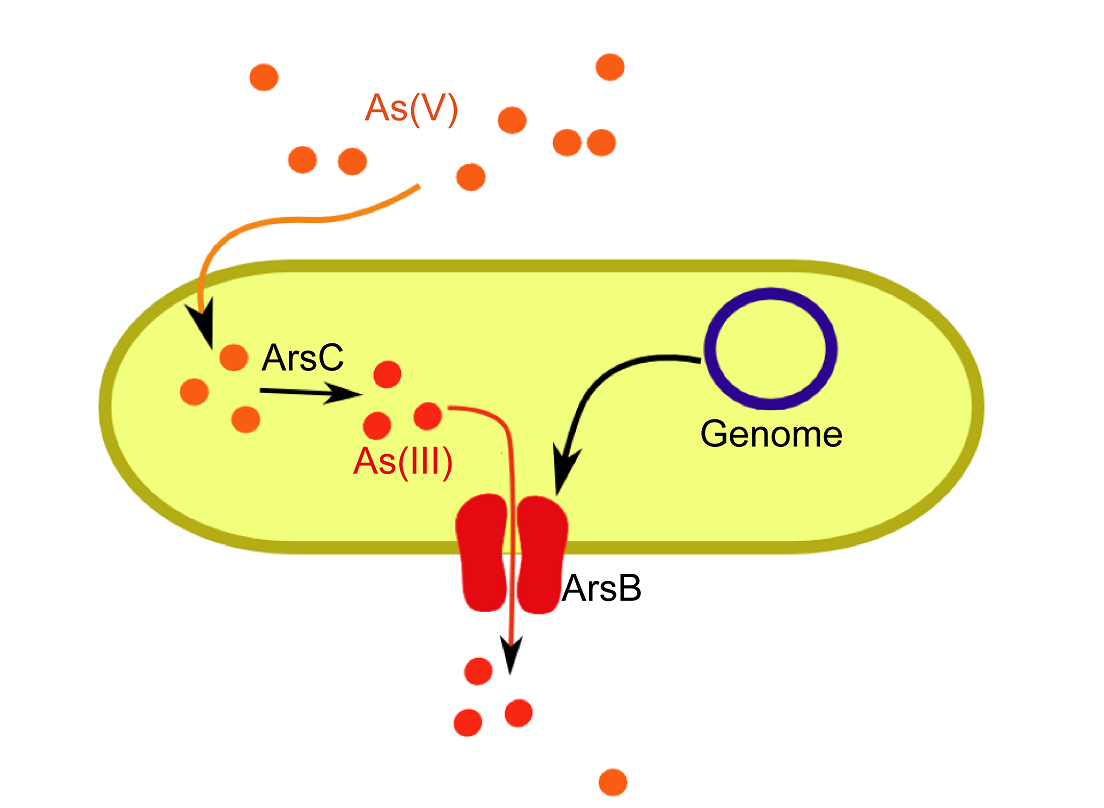Team:Virginia/Model
From 2009.igem.org
edit
Model Development
In order to develop our model, we decided on a system of nonlinear ordinary differential equations (ODEs) to describe the concentrations of arsenate (As(V)) and arsenite (As(III)). This system of nonlinear ODEs are based on the concept of mass balance. The model is divided into two compartments: intracellular and extracellular. The above schematic was used to develop the model.
The equation below describes the first part of the model whereby extracellular arsenate concentration is determined by diffusional flux into and out of the cell. This flux is determined by the concentration gradient as reflected in the equation below (the k12 terms).
http://people.virginia.edu/~bsf2u/Extracellular Arsenate Concentration_files/image002.gif
The next part of the model represents the intracellular arsenate concentration. This is a function of the influx of arsenate into the cell by diffusion as well as the eflux of arsenate from the cell (again, the k12 terms). Furthermore, there is a term (the kc term) which represents the conversion of arsenate into arsenite by ArsC reductase.
http://people.virginia.edu/~bsf2u/Extracellular%20Arsenate%20Concentration_files/image004.gif
Intracellular arsenite is generated by the ArsC reductase (again, the kc term) and is also subject to the usual diffusional flux into and out of the cell (represented by the k34 terms). Furthermore, since arsenite is so water soluble, it has a difficult time passing through the nonpolar cell membrane by simple diffusion and therefore requires the cell to actively pump the arsenite out of the cell. This is the action, indeed the purpose of the ArsB pump: to get the more soluble, and more toxic arsenite out of the cell. This action of the ArsB pump is represented by the kB term in the equation below.
http://people.virginia.edu/~bsf2u/Extracellular%20Arsenate%20Concentration_files/image006.gif
Finally, extracellular arsenite concentration is a function of the arsenite pumped out by ArsB (again represented by the kB term), as well as the much less important simple diffusion of arsenite.
http://people.virginia.edu/~bsf2u/Extracellular%20Arsenate%20Concentration_files/image008.gif
The equations below are another way of viewing the model based on general reactions.
Model Results/Validation
http://people.virginia.edu/~bsf2u/Extracellular%20Arsenate%20Concentration_files/model_output_1.png
Using HPLC measurements of arsenate and arsenite concentrations, in intracellular or extracellular compartments, and at various time points, we used a novel parameter fit algorithm developed in Matlab in order to determine the parameters.
Our model predicts exactly the expected results as is shown above. In the upper left graph, extracellular arsenate decays as it diffuses into the cell. In the upper right graph, intracellular arsenate initially peaks as the arsenate diffuses into the cell and before the ArsC reductase kicks in. Eventually however, the ArsC kicks in and arsenate is converted to arsenite at which point intracellular arsenate also decays.
In the lower right graph, intracellular arsenite initially peaks as the ArsC kicks in and converts arsenate to arsenite. It eventually peaks however, as ArsB, the arsenite pump kicks in pumps arsenite out of the cell. As we can see in the lower left extracellular arsenite concentration graph, as the cellular system functions, extracellular arsenite levels rises as extracellular arsenate is converted by the cell.
--Bsf2u 00:59, 22 October 2009 (UTC)
 "
"

